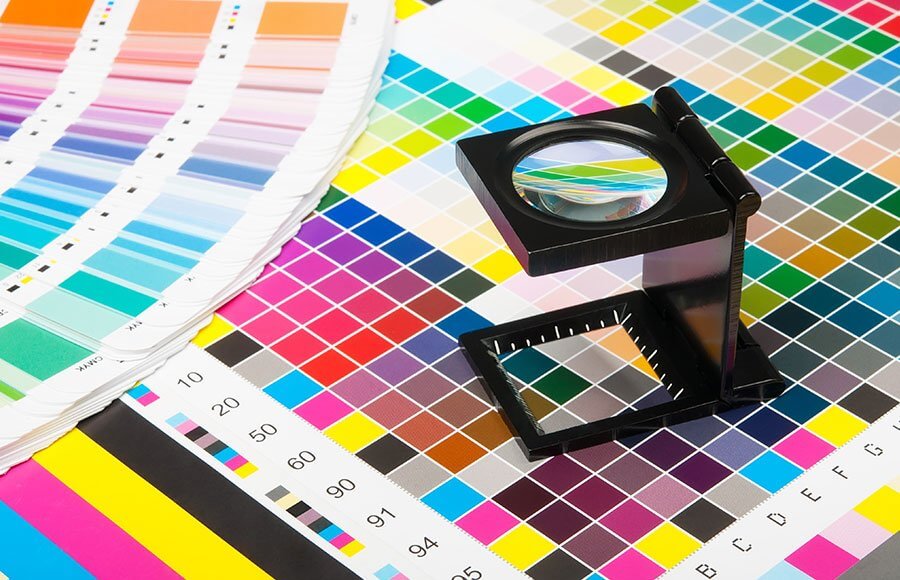litho printing vs Digital Printing: What to Understand
litho printing vs Digital Printing: What to Understand
Blog Article
A Comprehensive Overview to Understanding Litho Printing Methods
The globe of litho printing, a technique stemming from the late 18th century, is an interesting mix of history, development, scientific research and art. Remain with us as we trip into the fascinating realm of litho printing.
The Historic Advancement of Litho Printing
The historical trajectory of litho printing, a pivotal technology in the world of interaction, is a captivating tale of human ingenuity. Birthed in the late 18th century by Alois Senefelder, this method was at first a cost-effective technique of releasing staged jobs. Lithography, originated from the Greek words for 'rock' and 'to compose', used a smooth stone surface area to move pictures onto paper. The procedure advanced with the introduction of the rotating press, which significantly boosted productivity (litho printing). In the 20th century, the innovation of balanced out lithography revolutionized the market, permitting for mass manufacturing of top notch prints. Each stage of litho printing's advancement showcases humankind's relentless quest of performance and top quality in visual communication.
Deciphering the Science Behind Litho Printing Inks
Moving on in the expedition of litho printing methods, the focus currently changes to the scientific research behind litho printing inks. The make-up of these inks, their drying process, and color mixing strategies form the backbone of this complex art type. Understanding these elements is essential to understanding the craft and accomplishing the preferred print results.
Structure of Litho Inks
In lithographic printing, the essential role of litho inks can not be overstated. Pigments, the color-providing aspects, are finely ground particles put on hold in the car, a fluid that brings the pigment onto the printing surface. Each part plays a critical component in the last print's high quality, making the precise formulation of litho inks an elaborate scientific research.
Ink Drying Process
From the structure of litho inks, attention transforms to the fascinating procedure of ink drying out. The drying process is crucial, as it influences the last print's quality and longevity. Two primary methods are utilized in litho printing: oxidative drying and absorption. Oxidative drying involves the ink reacting with oxygen airborne to form a hard, dry film. This method offers a resilient finish, yet can be slower compared to absorption. Absorption, on the various other hand, involves the ink permeating into the paper fibers, which is a much faster procedure but can result in less vibrant colors. The choice in between these techniques is dependent upon elements such as print speed requirements, the paper kind used, and the desired coating.
Color Mixing Techniques
While the drying procedure plays an essential role in litho printing, the scientific research of shade blending strategies holds equal relevance. The scientific research behind litho printing inks also takes right into account the transparency of the ink, which influences exactly how shades overlay and mix.
The Art and Layout Components in Litho Printing
Litho printing breathes life into art and layout with its distinct aspects. The process includes creating an image on a lithographic limestone plate or metal plate with a smooth surface. The photo is then printed onto a medium, usually paper, by transferring the ink from home plate. What collections litho printing apart is its ability to reproduce elaborate layouts with high fidelity, making the outcome practically the same to the initial art work. This is achieved via making use of different line strategies such as cross-hatching, stippling, and hatching, which allow for a variety of tonal results. Litho printing fits a range of colors, allowing musicians to develop vibrant and dynamic prints. This combination of accuracy and flexibility makes litho printing a preferred option for numerous musicians and developers.
Modern Applications of Litho Printing Strategies
Litho printing strategies have found considerable usage in the contemporary business sector. Its influence and value remain to expand with the advent of brand-new developments and innovations in the field. This area will explore these modern applications and the transformative function they play in the printing industry.
Business Litho Printing Makes Use Of
Litho printing stays a vital part of the industrial industry. High-volume printing tasks, such as the manufacturing of books, papers, and product packaging, rely on litho printing for its ability to deliver remarkable picture top quality and cost performance. Litho printing additionally gives a broad shade spectrum, remarkable to that of digital printing.
Technologies in Litho Printing
Pushing the limits of typical techniques, contemporary innovations have actually sustained a host of innovations in litho printing. One popular development is electronic litho printing, which incorporates the virtues of digital innovation with litho's high-quality outcome. These technologies underscore the long-lasting significance of litho printing in the modern-day globe.
Checking out the Process of Litho Printing: Detailed

Difficulties and Solutions in Contemporary Litho Printing

Despite the accuracy and custom that litho printing happily supports, it is not without its collection of modern difficulties. The most common problems consist of the high preliminary configuration expense, problem in printing variable data, and ecological problems as a result of chemical use. Nevertheless, solutions are becoming innovation progresses. Digital litho printing permits affordable short runs and simple modification, addressing the issue of variable information. Environmentally-friendly inks and more secure plate-making processes mitigate ecological worries. Additionally, developments in automation have actually decreased labor prices, better equalizing the lithography procedure. Therefore, while there are difficulties, the litho printing market is proactively adapting to meet them head-on, ensuring its significance in the future.
Conclusion
In conclusion, litho printing, with its abundant background and clinical intricacies, holds a considerable area in the print market. As the overview reveals, it's a synthesis of art and technology, with contemporary innovations guaranteeing its importance. The sector faces challenges that need cutting-edge services, with a focus on automation and sustainability. The future of litho printing depends upon its capacity to adjust to these changing needs, attesting its enduring value in a developing market.

Report this page